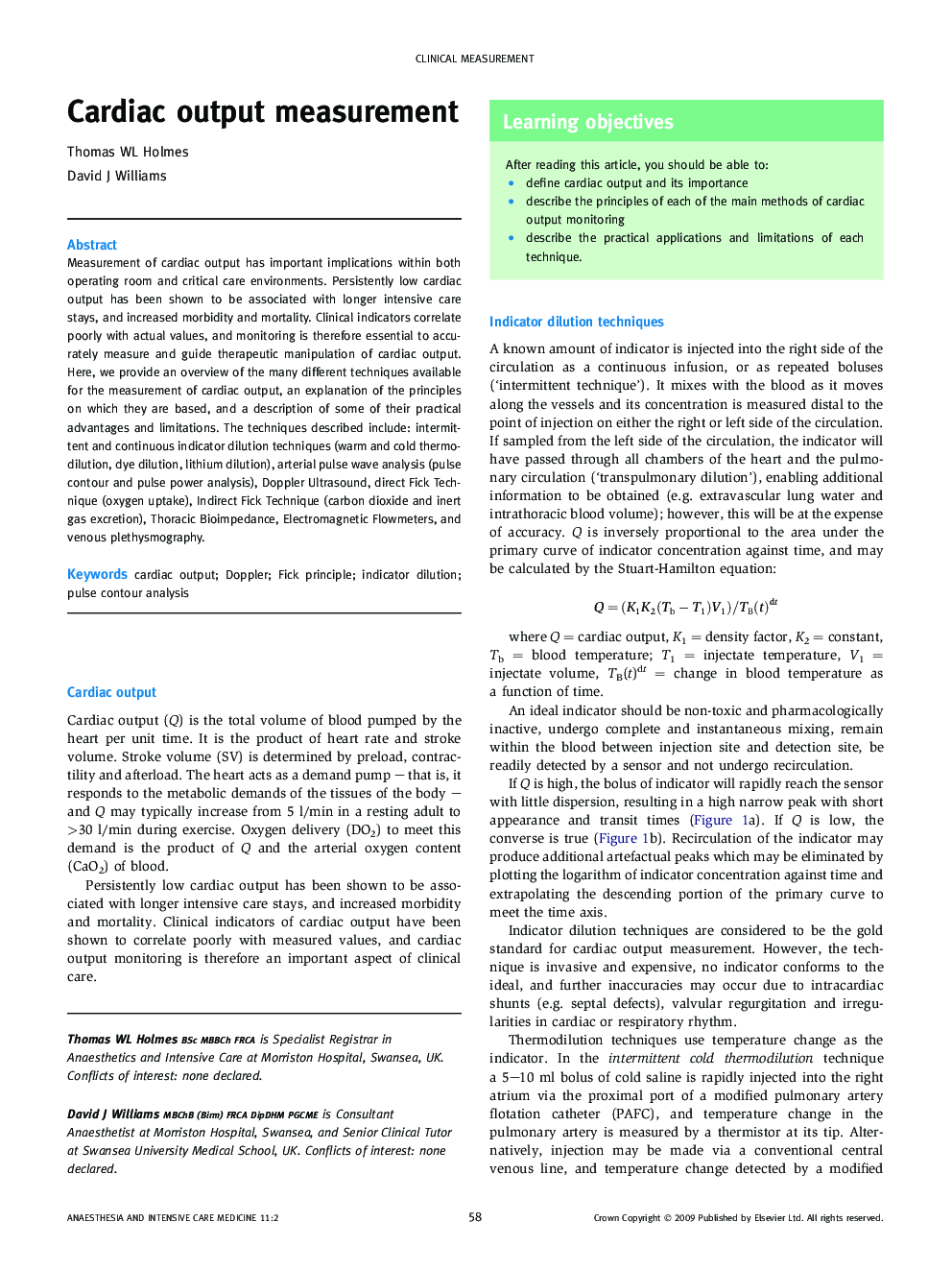| Article ID | Journal | Published Year | Pages | File Type |
|---|---|---|---|---|
| 2743184 | Anaesthesia & Intensive Care Medicine | 2010 | 4 Pages |
Measurement of cardiac output has important implications within both operating room and critical care environments. Persistently low cardiac output has been shown to be associated with longer intensive care stays, and increased morbidity and mortality. Clinical indicators correlate poorly with actual values, and monitoring is therefore essential to accurately measure and guide therapeutic manipulation of cardiac output. Here, we provide an overview of the many different techniques available for the measurement of cardiac output, an explanation of the principles on which they are based, and a description of some of their practical advantages and limitations. The techniques described include: intermittent and continuous indicator dilution techniques (warm and cold thermodilution, dye dilution, lithium dilution), arterial pulse wave analysis (pulse contour and pulse power analysis), Doppler Ultrasound, direct Fick Technique (oxygen uptake), Indirect Fick Technique (carbon dioxide and inert gas excretion), Thoracic Bioimpedance, Electromagnetic Flowmeters, and venous plethysmography.
